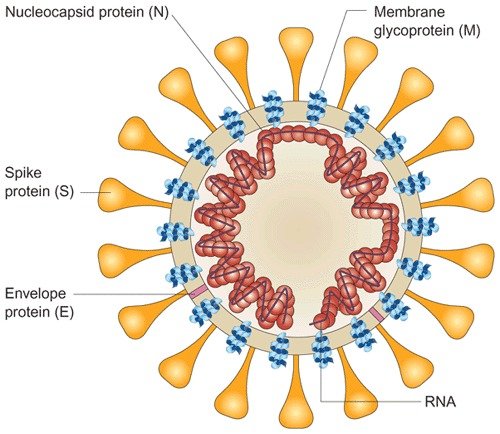Novel Strain of Coronavirus
Why in News
Recently, the Lancet published a study titled “Clinical features of patients infected with 2019 novel coronavirus in Wuhan, China”.
- The study highlighted the high mortality due to the 2019 novel coronavirus (2019-nCoV infection) which caused clusters of severe respiratory illness similar to severe acute respiratory syndrome (SARS) coronavirus.
- It also pointed out that there are major gaps in the knowledge of the origin, epidemiology, duration of human transmission and clinical spectrum of the disease.
The Lancet
- It is a weekly peer-reviewed general British medical journal.
- It is among the world's oldest, most prestigious, and best known general medical journals.
Key Points
- Findings of the Study
- Most of the infected patients were men.
- Less than half had underlying diseases (diabetes, hypertension and cardiovascular ailments).
- 66% of patients had been exposed to Huanan seafood market.
- Researchers collected and analysed data by real-time Reverse transcription-polymerase chain reaction (RT-PCR).
- RT-PCR is a laboratory technique combining reverse transcription of RNA into DNA and next-generation sequencing.
Coronavirus
- Coronaviruses are a specific family of viruses, with some of them causing less-severe damage, such as the common cold and others causing respiratory and intestinal diseases.
- A coronavirus has many “regularly arranged” protrusions on its surface, because of which the entire virus particle looks like an emperor’s crown, hence the name “coronavirus”.
- It is an RNA virus with ribonucleic acid (RNA) as its genetic material instead of deoxyribonucleic acid (DNA). That means the virus blends with its host’s DNA and can mutate rapidly.

- Due to this property of rapid mutation, coronaviruses can be quite different from one another.
- These can affect humans as well as mammals including pigs, cattle, cats, dogs, martens, camels, hedgehogs and some birds.
- There are four common disease-causing coronaviruses, while the two other are the Severe Acute Respiratory Syndrome (SARS) coronavirus and the Middle East Respiratory Syndrome (MERS) coronavirus, both of which can cause severe respiratory diseases.
- In the newly identified coronavirus, a direct link with the disease has not been established yet. It was speculated that it was related to the SARS epidemic of 2002.
- World Health Organisation (WHO) has said that further investigations and research are required to determine the source, modes of transmission and extent of infection caused by the new virus.
Difference Between DNA and RNA Viruses
- A virus is a biological agent that can self-replicate inside a host cell. The infected cells by viruses may produce thousands of new copies of the original virus at an extraordinary rate.
- The genetic material of a virus can be either DNA or RNA. The viruses that contain DNA as their genetic material are called the DNA viruses. RNA viruses, on the other hand, contain RNA as their genetic material.
- DNA viruses are mostly double-stranded while RNA viruses are single-stranded.
- RNA mutation rate is higher than the DNA mutation rate.
- DNA replication takes place in the nucleus while RNA replication takes place in the cytoplasm.
- DNA viruses are stable while RNA viruses are unstable.